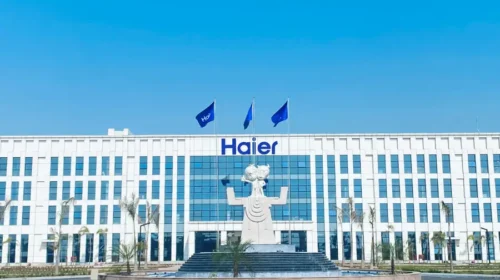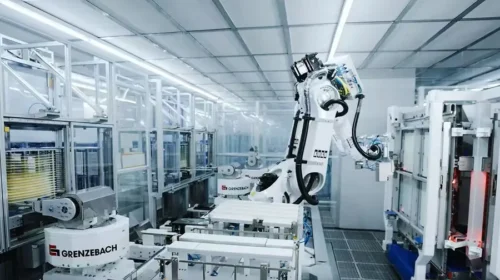Virscend Education Scores Return to Profits With Asset-Light Model

The private educator’s latest annual revenue more than doubled and it registered a net profit of 11.38 million yuan after changing its business model
Key Takeaways:
- Virscend Education returned to profitability in its latest fiscal year after expanding the student base at its four high schools using a new asset-light model providing management services
- The company is actively exploring other ways to improve its performance, with education management and consulting services as one of its best prospects
By Molly Wen
China’s education crackdown last year has left private educators in dire straits, with many scrambling to find new business models. But Virscend Education Co. Ltd. (1565.HK)has managed to reinvent itself in just one year, scoring a return to profitability in the process.
China’s new Private Education law that took effect last September laid out guidance and imposed restrictions on the operation, taxation, ownership structures, and M&A activities for private education institutions. Among those, a ban on for-profit companies offering K-9 tutoring services in core curriculum areas dealt an instant death blow to many in the field, and sparked a mad scramble among the survivors to find other business models to survive.
Based in Southwest China’s Sichuan province, Virscend has been one of the first notable success stories. Its rapid turnaround was on display in its annual financial statement filed last Thursday, showing the company returned to profitability in its latest academic year.
The company’s latest financials show its operating revenue for the year through August reached 551 million yuan ($79 million), up 117.4% from its revenue for the first eight months of 2021. The shorter year-ago comparison was the result of the company’s recent switch from reporting on a calendar year basis to an academic one. Virscend posted an 11.38 million yuan profit for the 12 months through August, reversing a 1.8 billion yuan loss in the first eight months of last year.
The company’s shares rose 6% over the three trading days after its results came out, closing at HK$0.132 on Monday. The stock was suspended from trading in November last year and did not resume until May 10 for failing to file its financials on time. The shares lost about half their value when trading resumed, with the company’s current market capitalization at just HK$410 million ($53 million), down nearly 90% from the HK$3.9 billion yuan it was worth before the new education law was announced on May 14 last year.
Growing student population
While Virscend’s latest report shows its revenue doubled this year, that doesn’t tell the full story. It noted the increase was partly inflated by the fact that figures for its truncated year-ago period included only five months’ worth of tuition and accommodation revenues. It had 6,871 enrolled high-school students this year compared to 4,449 in 2021. That figure is key, since the number of students determine how much money it gets from tuition, cafeteria operation and accommodation services, which collectively account for as much as 95% of total revenue.
The big expansion of its student base owes largely to the addition of two new asset-light schools into its portfolio from September this year. Those joined two similar high schools started in 2021, giving Virscend four such schools using the model.
Under the model, the company provides operational management services to private or public schools and charges a management fee. The model requires far less spending on land and infrastructure than the more traditional business of owning and operating schools. Virscend has also been providing after-class tutoring and entrance examination guidance, as well as organizing after-class activities and summer and winter camps to supplement its revenue. Another four high schools co-established with partners are about to start up, meaning the company’s future revenue growth looks quite secure.
Such asset-light private education companies can also expand rapidly with relatively low risk. As a result, not only Virscend, but other names like Wisdom Education (6068.HK), China Maple Leaf Educational Systems (1317.HK) and Beijing Kaiwen Education (002659.SZ) are using similar models as part of their own transitions.
But whether the model can yield handsome profits is another issue. At least initially, the newer model has eroded Virscend’s gross margins compared with its older model operating K-9 schools. Its most recent gross margin came in at 30.4%, down from 31.8% in the first half of 2021, mostly due to the big increase in sales costs after the two new high schools were up and running.
Graduates going places
In addition to consulting on school operations, Virscend is also exploring other new avenues like overseas studies consultation services and non-degree vocational training. An example of the latter has the company partnering with several commercial real estate developers to provide one-stop comprehensive training courses. Last but not least, the company is exploring outside-school services and after-class care as other potential new businesses.
Among those new areas, its revenue related to overseas studies consultation grew 9.2% year-on-year in the last fiscal year. The limited growth partly owes to the pandemic and strained relations between China and some previously popular overseas studies destinations, which dampened enthusiasm for study abroad.
The non-degree vocational training business is also off to a rocky start, with revenue down 22.5% year-on-year in the latest report. That leaves educational management and consultation services as the only area reporting big growth, up by as much as 123.5%. That operation targets K-12 schools and preschools, and provides services including education quality surveillance, curriculum development, day-to-day operation, teacher recruitment and training, brand promotion and campus design. Clients for such services already include one public high school, two K-9 public schools and five private kindergartens.
The need to turn a new leaf hasn’t taken a toll on the quality of Virscend’s education services, the company said, with 94.7% of the graduates from its two best high schools entering top-tier colleges in China. Those included 47 students enrolled in Peking University or Tsinghua University, considered China’s top two colleges. Some 72.4% of graduates from its other high schools also passed college entrance exams, much higher than the 36.4% average rate in Sichuan province.
Despite its status as a leading private educator in Sichuan, Virscend still isn’t that highly regarded by investors. Its current price-to-sales (P/S) ratio stands at a bottom-of-the-class 0.67 times, compared to 1.16 times for Wisdom Education and 20.7 times for Beijing Kaiwen Education. That may show that investors aren’t optimistic about the company’s chance of making a successful transition.
To subscribe to Bamboo Works weekly free newsletter, click here






